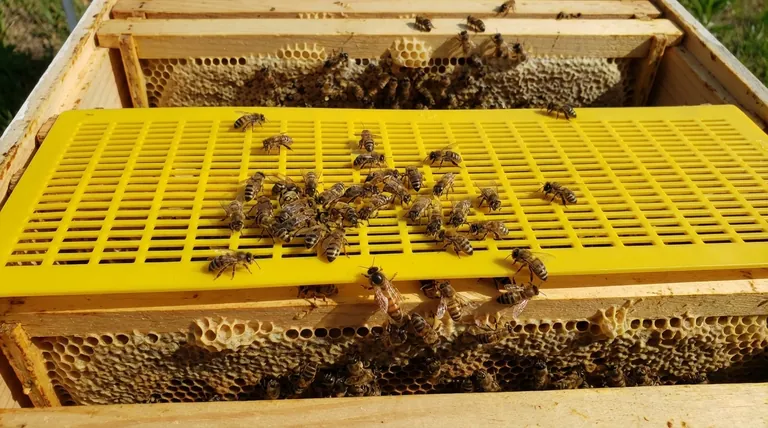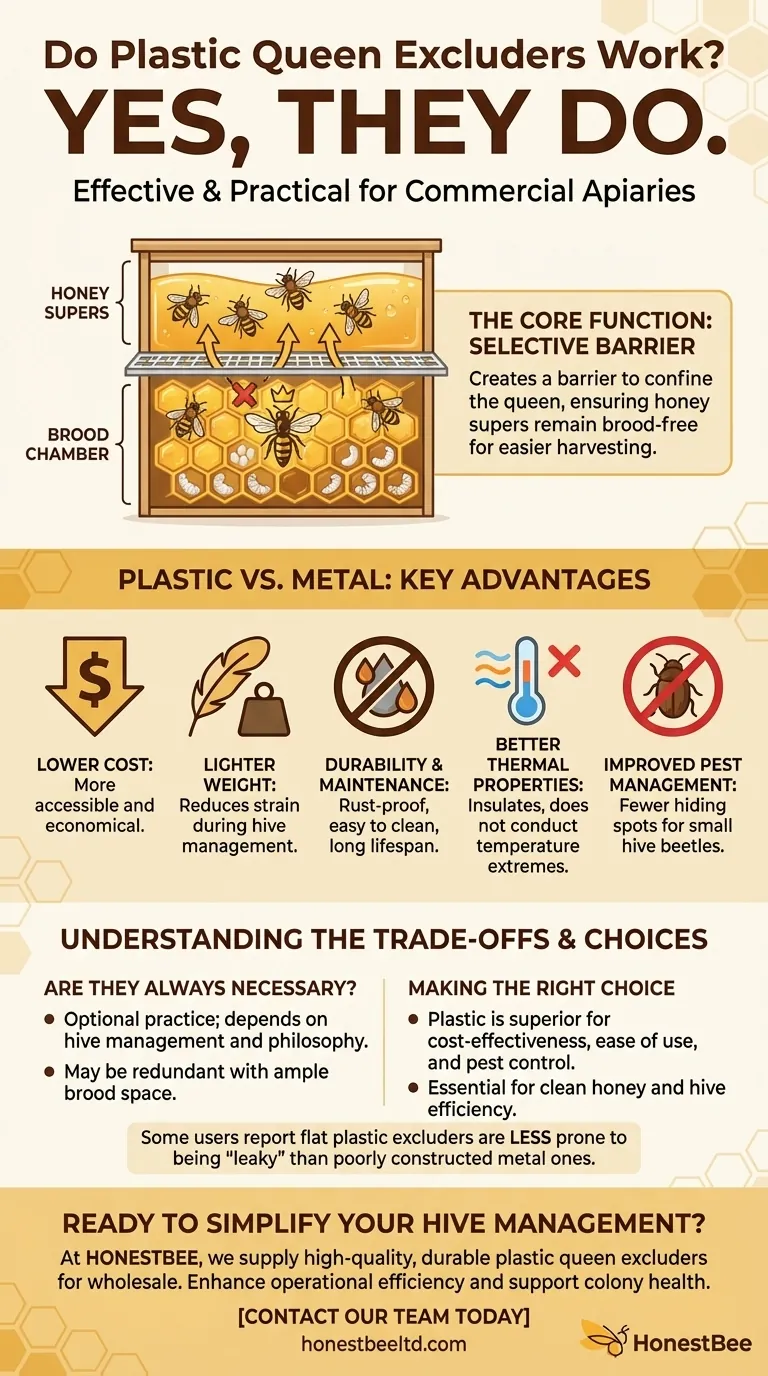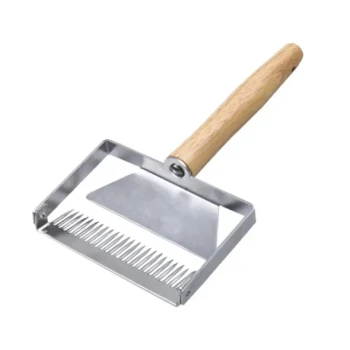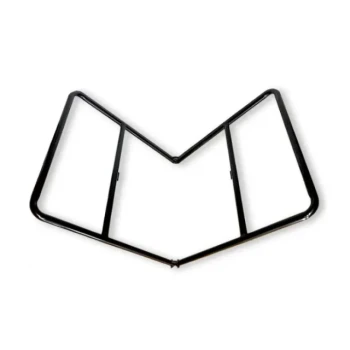Yes, plastic queen excluders work effectively. They serve the primary purpose of confining the queen bee to the brood chamber, preventing her from laying eggs in the honey supers. Many beekeepers find them to be a reliable and inexpensive alternative to metal excluders, offering distinct advantages in weight, maintenance, and pest management.
The decision to use a queen excluder is a matter of beekeeping philosophy, but when one is needed, plastic models are a highly functional, cost-effective, and practical choice. They reliably separate brood from honey while offering benefits that metal versions cannot.

The Core Function: Why Use a Queen Excluder?
### Separating Brood from Honey
The fundamental purpose of a queen excluder is to create a barrier between the hive's brood nest and the honey storage areas, known as honey supers.
This ensures the queen, whose primary role is laying eggs, remains in the lower part of the hive.
### The Mechanism: A Selective Barrier
A queen excluder is a flat grid with precisely sized gaps. These gaps are large enough for the smaller worker bees to pass through freely but too small for the larger queen bee's thorax.
This simple but effective design allows workers to continue building comb and storing honey in the supers while the queen is confined to the brood chamber.
### The Impact on Honey Harvesting
By keeping the honey supers free of eggs and larvae, a queen excluder simplifies the honey extraction process.
This prevents brood from contaminating the final honey product and makes the management of a large-scale or commercial apiary significantly more efficient.
Evaluating Plastic vs. Metal Excluders
While the goal is the same, plastic excluders have specific characteristics that set them apart from their metal counterparts.
### Key Advantage: Cost and Weight
Plastic queen excluders are almost always less expensive than metal ones, making them an accessible choice for hobbyists and commercial beekeepers alike.
They are also significantly lighter, which makes lifting heavy honey supers less strenuous.
### Key Advantage: Durability and Maintenance
A major benefit of plastic is that it does not rust. Unlike metal excluders which can corrode over time, plastic versions are easy to clean and have a long lifespan with proper care.
### An Overlooked Benefit: Thermal Properties
Metal is an excellent conductor of heat and cold. A metal excluder can transfer temperature extremes into the hive cluster, which can be a source of stress for the colony.
Plastic is a much better insulator and does not conduct temperature, helping maintain a more stable internal hive environment.
### A Critical Factor: Pest Management
The smooth, simple design of most plastic excluders leaves fewer cracks and crevices for pests to hide.
This is a significant advantage in managing infestations of small hive beetles, which often seek refuge in the gaps and corners found on framed metal excluders.
Understanding the Trade-offs
### Are They Always Necessary?
Using a queen excluder is an optional practice. In fact, it is estimated that less than 50% of beekeepers use them regularly.
In hives with multiple deep hive bodies for the brood nest, the queen often has enough space and may not venture into the upper honey supers, potentially making an excluder redundant.
### The "Leaky" Excluder Problem
No excluder is 100% foolproof. A particularly small queen might find her way through, or a damaged section could create an opening.
However, some beekeepers report that their flat plastic excluders are actually less prone to being "leaky" than some poorly constructed framed wire models.
Making the Right Choice for Your Apiary
Ultimately, the equipment you choose should align with your beekeeping goals and management style.
- If your primary focus is cost-effectiveness and ease of use: Plastic excluders are the superior choice due to their low price, light weight, and simple maintenance.
- If your primary focus is clean honey and hive efficiency: A plastic excluder is an invaluable tool for ensuring your honey supers remain free of brood, simplifying your harvest.
- If you are a hobbyist practicing minimal-intervention beekeeping: You may choose to forgo an excluder entirely, but a plastic one is an inexpensive tool to have on hand should you need to manage your queen's location.
Choosing the right tool is about understanding its function and trade-offs to best support the health of your colony and the success of your harvest.
Summary Table:
| Feature | Plastic Queen Excluder |
|---|---|
| Primary Function | Confines the queen to the brood chamber |
| Cost | Lower cost than metal alternatives |
| Weight | Lightweight, reducing strain |
| Durability | Rust-proof and easy to clean |
| Thermal Properties | Better insulator, does not conduct temperature extremes |
| Pest Management | Smooth design discourages small hive beetles |
Ready to simplify your hive management and protect your honey harvest?
At HONESTBEE, we supply high-quality, durable plastic queen excluders and other essential beekeeping supplies to commercial apiaries and equipment distributors through our wholesale-focused operations. Our equipment is designed to enhance your operational efficiency and support the health of your colonies.
Contact our team today to discuss your wholesale needs and discover how our solutions can benefit your business.
Visual Guide

Related Products
- Professional Plastic Queen Excluder for Modern Beekeeping
- Plastic Queen Bee Excluder for Bee Hive Wholesale
- High Performance Plastic Queen Excluder for Beekeeping and Apiary Management
- Premium Wood Framed Metal Wire Queen Bee Excluder
- Metal Queen Bee Excluder for Beekeeping
People Also Ask
- What is a Queen Excluder and how does it work? Achieve Purer Honey & Better Hive Control
- What are the pros of using queen excluders? Boost Honey Production & Hive Efficiency
- Why are queen excluders recommended for Flow Hives? Prevent Brood Damage for a Clean Harvest
- What are the main advantages of using a queen excluder in beekeeping? Simplify Hive Management & Harvest
- How does a queen excluder work? Master Hive Management for Pure Honey Harvests



















